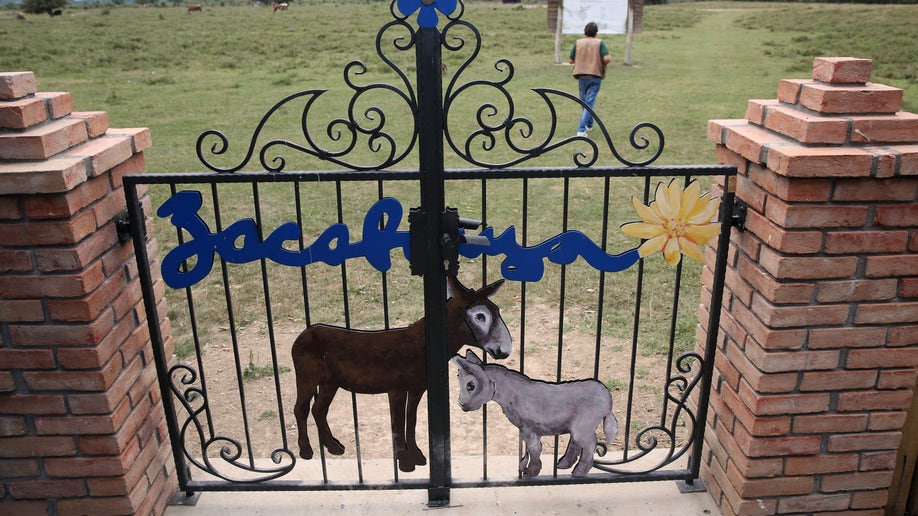close 
Fox News Flash top headlines for December 14
Fox News Flash top headlines are here. Check out what’s clicking on Foxnews.com.
Pule cheese, also known as magareći sir, is hailed as one of the rarest cheeses globally. Crafted predominantly from 60% Balkan donkey milk and complemented with 40% goat’s milk, this Serbian cheese is a product of exquisite proportions. Its rarity and meticulous process of creation makes it highly sought after.
How much is Pule cheese worth?
Pule cheese has prices that can reach several hundred or even thousands of dollars per pound. Its exclusivity, coupled with its exceptional taste and extensive aging, further elevates its market value, making it an incredibly valuable delicacy in the world.
‘WORLD’S OLDEST CHEESE’ DISCOVERED IN ANCIENT EGYPTIAN TOMB
Which animal milk is most expensive?
The milk from Balkan donkeys is considered one of the most expensive types of milk in the world. The limited quantity of milk these donkeys produce, along with the specific conditions required for their breeding and care, contributes to the high cost. Other types of milk, such as camel milk, can also be relatively expensive compared to more commonly consumed milks like cow’s milk. The scarcity of the animal, the specific care required for the breed, and the lower milk yield compared to more widely available animals contribute to the higher cost of these types of milk.
How do you make Pule cheese?
- Milking the Balkan Donkeys
- Milk processing
- Curding and cheese formation
- Pressing and aging
- Quality control
- Final Packaging

Pule cheese is made from the milk of Balkan donkeys and is priced at 1100 euros per kilo and reported to be the world’s most expensive cheese. (Oliver Bunic/Bloomberg via Getty Images)
1. Milking the Balkan Donkeys
The process begins with milking Balkan donkeys, a breed known for producing minimal quantities of milk with unique properties. These donkeys are bred in specific regions, and their milk is collected under strict conditions.
2. Milk processing
The collected milk undergoes a delicate process, where it’s gently pasteurized to maintain its natural flavors and qualities.
3. Curding and cheese formation
The milk is then curdled using traditional methods, often involving the use of natural enzymes or rennet. This process helps separate the curds from the whey.
NOVAK DJOKOVIC BUYS UP WORLD’S SUPPLY OF DONKEY CHEESE
4. Pressing and aging
The curds are collected and pressed into molds to give the cheese its characteristic shape. After shaping, the cheese is left to age for an extended period, typically several months or even longer, in controlled environments that ensure the development of its unique flavors and texture.
5. Quality control
Throughout the aging process, the cheese undergoes careful monitoring and quality checks to ensure that it matures into the desired flavor profile and texture characteristic of Pule cheese.
6. Final packaging
Once the cheese reaches its optimal aging period, it’s ready to eat! The pule cheese is packaged and prepared for distribution, often in limited quantities.
The entire process of making Pule cheese, from milking the Balkan donkeys to the final aging and packaging, requires accuracy, expertise and sticking to traditional methods.
Does Pule cheese taste good?
Pule cheese is renowned for its unique taste and texture, often described as rich, creamy and slightly nutty. Due to its extended aging process, Pule cheese develops a smooth and velvety texture, making it melt in the mouth. This cheese has complex flavors, with a blend of nutty undertones and creamy richness.
However, taste preferences are subjective, and opinions on Pule cheese’s flavor can vary. Some may find its distinctive taste delightful, while others may have different preferences when it comes to cheese flavors.
CLICK HERE TO GET THE FOX NEWS APP
What color is Pule cheese?
Pule cheese typically exhibits a creamy, pale yellow to a light golden color. This hue is attributed to the unique milk of Balkan donkeys used in its production, along with the aging process, which contributes to its characteristic appearance. The cheese’s color can vary slightly depending on factors such as the specific production methods and the duration of the aging process.

 next Image 1 of 3
next Image 1 of 3
 prev next Image 2 of 3
prev next Image 2 of 3
 prev Image 3 of 3
prev Image 3 of 3